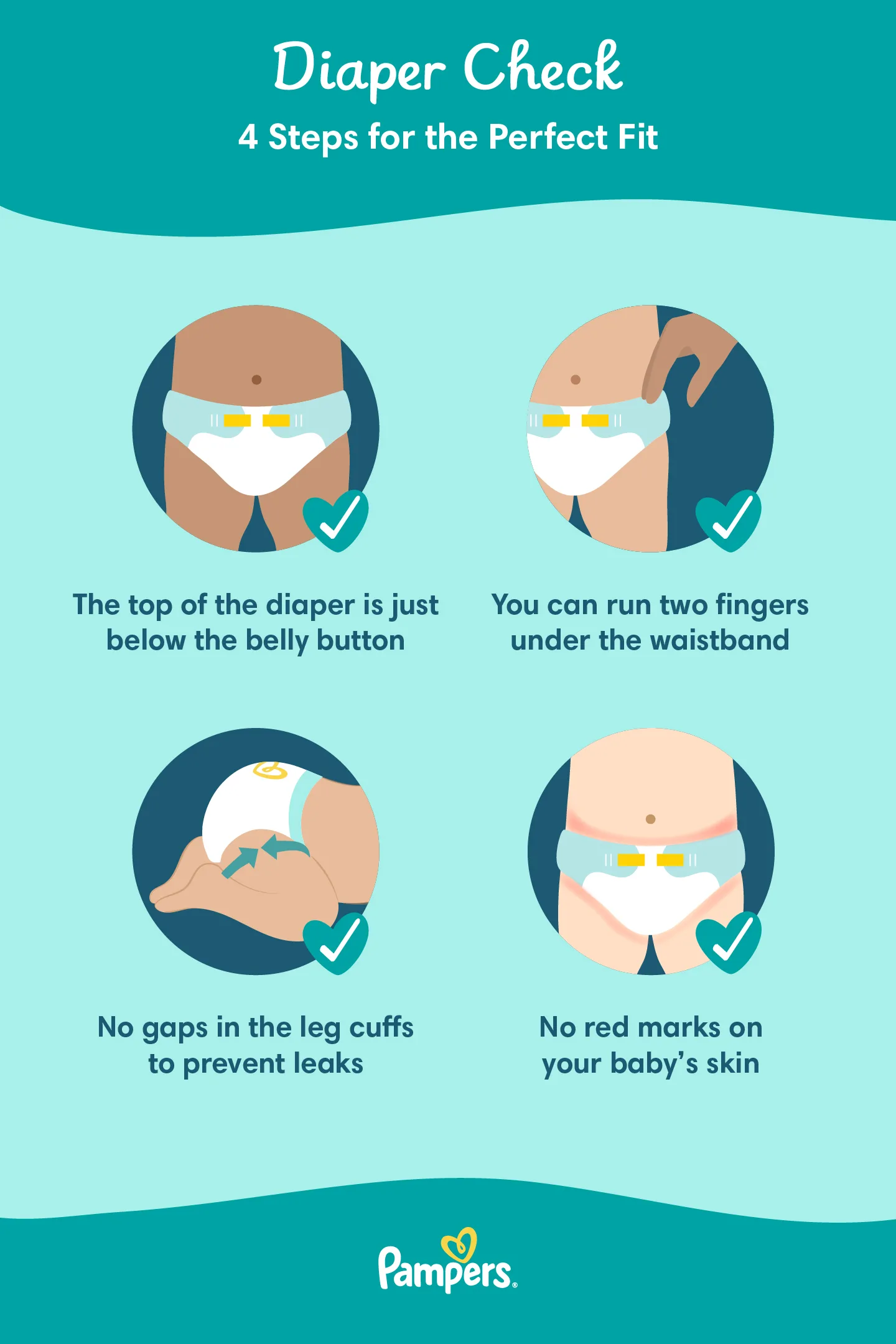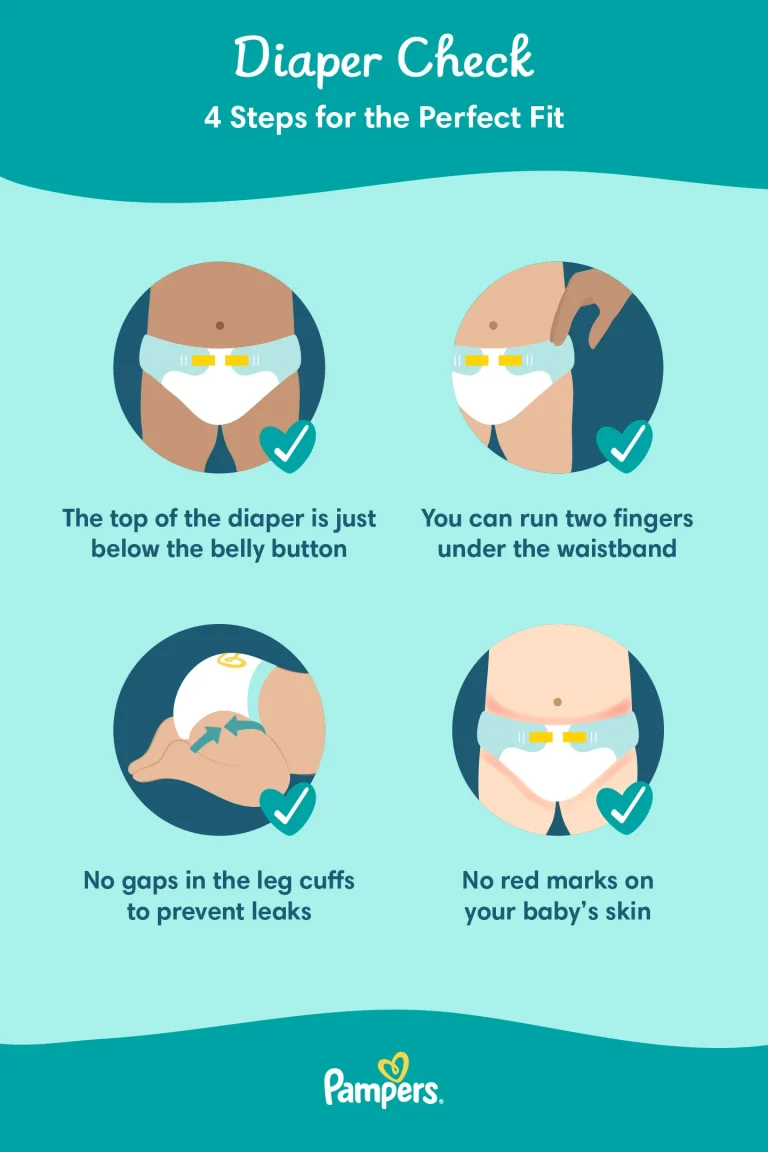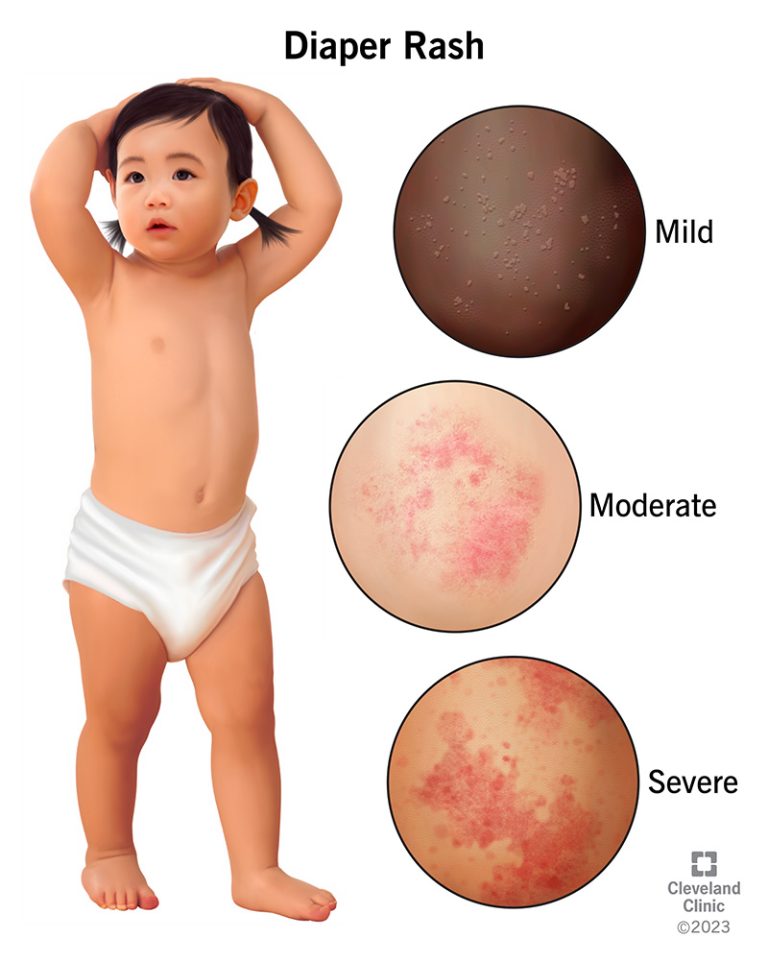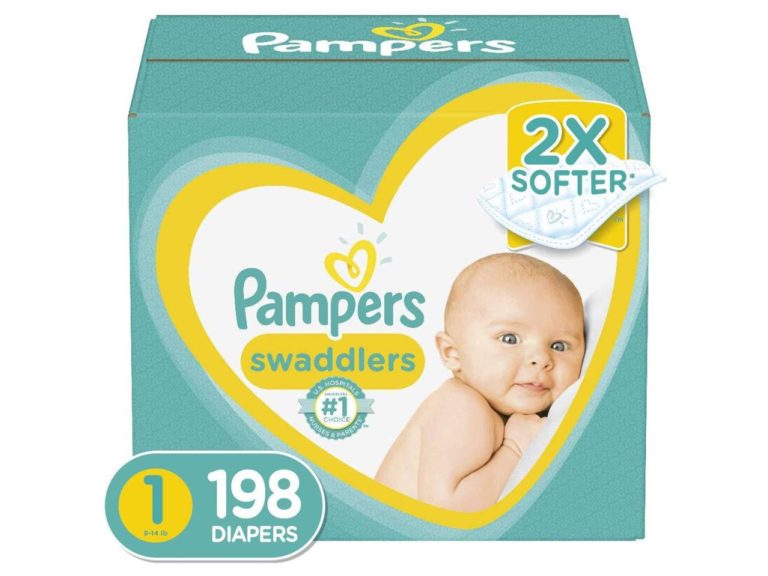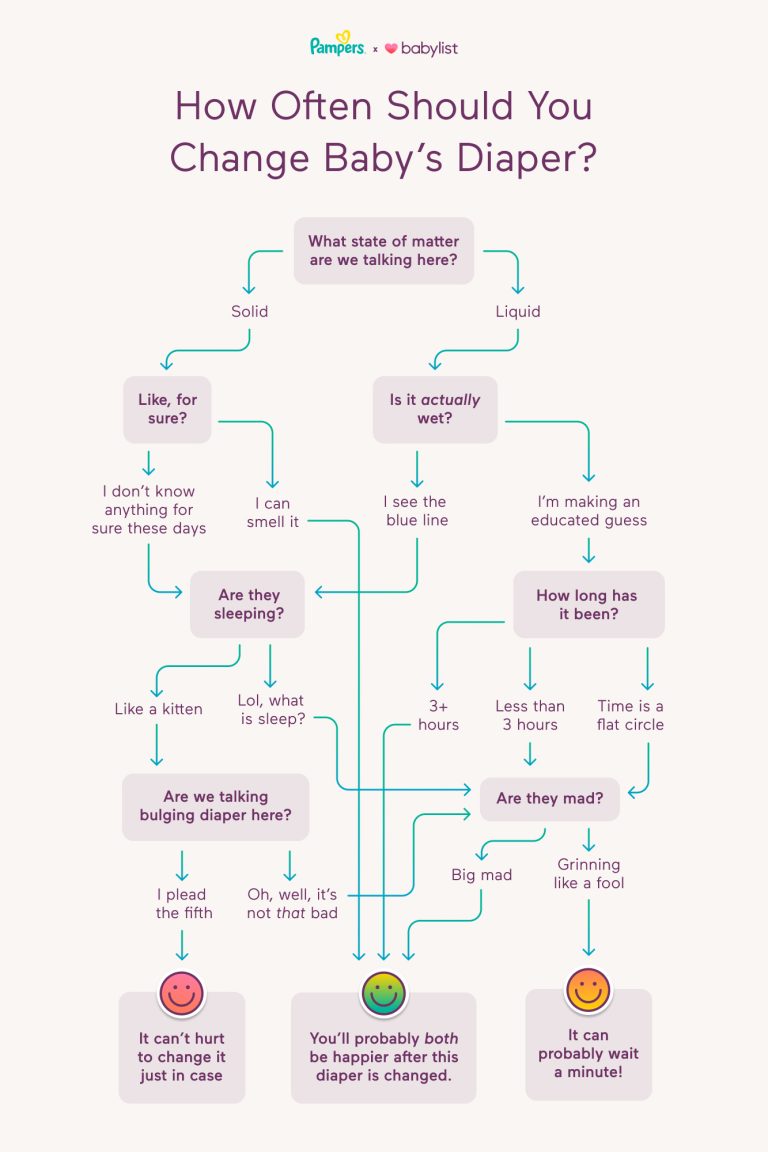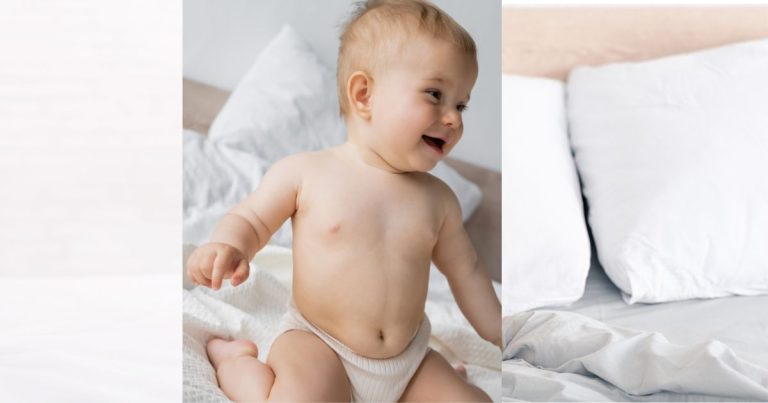How to Keep Baby’s Diaper from Leaking: Top 10 Proven Tips
To prevent your baby’s diaper from leaking, ensure proper size and fit. Change diapers frequently to avoid over-saturation.
Ensuring your baby’s diaper stays leak-free is crucial for their comfort and your peace of mind. Choosing the right diaper size is the first step; a snug fit around the legs and waist prevents gaps. Regular diaper changes are equally important to avoid over-saturation, which can lead to leaks.
Properly fasten the diaper tabs and ensure the inner flaps are pulled out to provide an extra barrier against leaks. Using high-quality, absorbent diapers can also make a significant difference. Paying attention to these details helps keep your baby dry and happy, reducing the chances of leaks and skin irritation.
Choose The Right Diaper Size
Choosing the right diaper size can prevent leaks. A well-fitting diaper ensures comfort for your baby. It also minimizes mess and discomfort. This is crucial for both parents and babies. Let’s explore why fit matters and how to spot signs of an incorrect size.
Importance Of Fit
The right fit ensures the diaper absorbs well. A loose diaper may cause leaks. On the other hand, a tight diaper can cause rashes and discomfort. The waistband should sit snugly without pinching. The leg cuffs should wrap around the thighs without gaps.
Diapers come in different sizes, usually based on weight. Follow the weight guidelines on the packaging. This helps in selecting the right size. Remember, a comfortable baby is a happy baby.
Signs Of Incorrect Size
Knowing the signs of an incorrect size is essential. Look for red marks on your baby’s skin. This can indicate the diaper is too tight. Leaks around the legs or waist suggest the diaper is too loose.
- Frequent leaks
- Red marks on skin
- Difficulty in fastening tabs
- Diaper looks too tight or too loose
If you notice any of these signs, consider changing the diaper size. Always prioritize your baby’s comfort and dryness.
Ensure Proper Diaper Fastening
Keeping your baby’s diaper from leaking can be a challenge. One key aspect is ensuring the diaper is fastened correctly. Proper fastening helps prevent leaks and keeps your baby comfortable. Below, we explore some practical tips on how to ensure proper diaper fastening.
Check For Gaps
Gaps around the legs and waist can lead to leaks. Ensure the diaper fits snugly around your baby’s legs and waist. Run your finger around the edges to check for gaps. Adjust the diaper if needed to make it fit more securely.
Use Adjustable Tabs
Most modern diapers come with adjustable tabs. Use these tabs to ensure a snug fit. Secure the tabs symmetrically on both sides. This helps distribute pressure evenly and prevents leaks. Check the tightness; it should be snug but not too tight.
| Tip | Description |
|---|---|
| Check for Gaps | Ensure no gaps around legs and waist |
| Use Adjustable Tabs | Make use of the diaper’s adjustable tabs |
Proper fastening is crucial to keep your baby’s diaper from leaking. Always check for gaps and use the adjustable tabs for a secure fit.
Change Diapers Frequently
Keeping your baby’s diaper from leaking can be a daunting task. One of the most effective methods is to change diapers frequently. Regular changes ensure dryness and comfort for your baby, reducing the chances of leaks.
Regular Intervals
Changing diapers at regular intervals is crucial. Aim for every two to three hours during the day. This helps in keeping the diaper from becoming too full.
Create a schedule that aligns with your baby’s feeding times. Babies often wet their diapers after eating. A routine will help you stay on top of diaper changes.
Overnight Strategies
Nighttime can be tricky for diaper leaks. Use overnight diapers designed to hold more liquid. They are more absorbent than regular diapers.
Double up with a booster pad inside the diaper. This provides extra absorption and helps in preventing leaks. Ensure the diaper fits snugly but not too tight.
Check and change the diaper just before bedtime. This gives your baby a fresh start for the night and reduces the risk of leaks.
| Time of Day | Action | Benefit |
|---|---|---|
| Morning | Change after feeding | Prevents morning leaks |
| Afternoon | Change every 2-3 hours | Maintains dryness |
| Night | Use overnight diapers | Reduces nighttime leaks |
Keeping your baby dry and comfortable requires regular diaper changes. Implement these strategies for a leak-free experience.
Use Overnight Diapers
Keeping your baby’s diaper from leaking can be challenging. One effective solution is using overnight diapers. These diapers are specially designed to handle long periods of use, ensuring your baby stays dry and comfortable throughout the night.
Extra Absorbent Features
Overnight diapers come with extra absorbent features that standard diapers lack. They have multiple layers of absorbent material, which can hold more liquid. This extra capacity helps prevent leaks and keeps your baby dry.
These diapers often have a stronger elastic waistband to create a better fit around your baby’s waist. This snug fit ensures that the diaper stays in place, reducing the chances of leakage.
Many overnight diapers also include leak guards around the legs. These guards act as barriers, preventing liquid from escaping the diaper. This feature is crucial for active babies who move a lot during sleep.
When To Use
Using overnight diapers is ideal during long sleep periods. They are perfect for nighttime use, as your baby is likely to sleep for several hours without a diaper change.
You can also use these diapers during long trips or outings. If you know you won’t be able to change your baby’s diaper frequently, overnight diapers are a great choice.
It’s also beneficial to use these diapers during naptime. Even short naps can lead to leaks if the diaper isn’t absorbent enough. Overnight diapers provide that extra protection.
| Feature | Benefit |
|---|---|
| Extra Absorbent Layers | Holds more liquid, prevents leaks |
| Stronger Elastic Waistband | Better fit, reduces leakage |
| Leak Guards | Prevents liquid from escaping |
Using overnight diapers can make a significant difference in keeping your baby’s diaper dry and leak-free. Consider incorporating them into your diapering routine for better results.
Double Up With Diaper Covers
Keeping your baby’s diaper from leaking can be challenging. One effective method is to double up with diaper covers. Using additional diaper covers helps secure the diaper, preventing leaks. In this section, we’ll discuss waterproof options and layering techniques.
Waterproof Options
Waterproof diaper covers are essential for leak prevention. They provide an extra layer of protection. PUL (Polyurethane Laminate) covers are a popular choice. They are both durable and waterproof. TPU (Thermoplastic Polyurethane) covers are also effective. They are softer and more flexible than PUL. Both options keep moisture from escaping.
Another option is wool diaper covers. Wool is naturally water-resistant and breathable. It helps keep your baby’s skin dry. Wool covers need special care but are worth the effort.
Consider using a variety of waterproof covers. This ensures you have the best protection for different situations.
Layering Techniques
Layering diaper covers can significantly reduce leaks. Start with a well-fitted diaper. It should snugly fit your baby’s waist and legs.
Next, add a waterproof cover. Ensure it completely covers the diaper. Tuck in any loose edges to avoid leaks. You can use a second cover if needed. This adds an extra barrier against leaks.
For nighttime, use a double layer of covers. Nighttime leaks are common due to longer periods between changes. Extra layers provide added protection.
| Situation | Recommended Layers |
|---|---|
| Daytime | One waterproof cover |
| Nighttime | Two waterproof covers |
| Travel | One waterproof cover with extra inserts |
Using the right layering techniques helps ensure your baby’s comfort. It also keeps their clothes dry and clean.

Credit: www.babycubby.com
Monitor Liquid Intake
Keeping your baby’s diaper from leaking can be challenging. A crucial factor is monitoring their liquid intake. Understanding the timing and impact of drinks can help prevent leaks.
Timing Of Drinks
The timing of your baby’s drinks plays a significant role in diaper leaks. Avoid giving large amounts of fluids close to bedtime. This reduces the likelihood of overnight leaks.
Here is a helpful table to guide drink timings:
| Time of Day | Recommended Fluid Amount |
|---|---|
| Morning | 4-6 ounces |
| Afternoon | 4-6 ounces |
| Evening | 2-4 ounces |
Spread out drinks throughout the day. This helps maintain a balanced intake and reduces the risk of leaks.
Impact On Diaper Leaks
Monitoring liquid intake directly impacts diaper leaks. Excessive fluids can cause diapers to overflow. This is especially true during naps and overnight.
Here are some tips to minimize leaks:
- Use high-absorbency diapers for night-time.
- Ensure a snug fit around the legs and waist.
- Change the diaper right before bedtime.
Proper hydration is important, but balance is key. Keep track of your baby’s drinks to help control diaper leaks.
Check For Diaper Defects
One of the key reasons for diaper leaks is defects. Diaper defects can cause leaks and discomfort for your baby. Ensuring the diaper is free from defects can help maintain dryness.
Common Manufacturing Issues
Diapers may sometimes have manufacturing defects. These can include:
- Weak Elastic Bands: These can cause gaps around the legs.
- Poor Adhesive Tabs: These may not stick properly, leading to loose diapers.
- Faulty Absorbent Core: This can lead to inadequate absorption.
How To Inspect
Inspecting a diaper for defects is essential. Here’s a step-by-step guide:
- Check the elastic bands around the legs. Ensure they are tight and stretchy.
- Examine the adhesive tabs. They should stick firmly to the diaper.
- Feel the absorbent core. It should be even and thick.
- Look for any tears or holes in the diaper material.
Make this inspection part of your routine. It can help prevent leaks and keep your baby comfortable.
Use Diaper Liners
Keeping your baby’s diaper from leaking can be challenging. One effective solution is to use diaper liners. Diaper liners add an extra layer of protection, absorbing moisture and preventing leaks. They also make diaper changes easier by keeping messes contained.
Types Of Liners
There are various types of diaper liners available. Understanding each type can help you choose the best option for your baby.
- Disposable Liners: These are single-use liners. They are convenient and easy to use.
- Reusable Liners: Made from cloth, these liners can be washed and reused. They are eco-friendly and cost-effective.
- Flushable Liners: These liners can be flushed down the toilet. They are a good option for parents who want a hassle-free cleanup.
Benefits
Using diaper liners offers many benefits. Here are some key advantages:
- Leak Protection: Liners add an extra layer, reducing the chance of leaks.
- Easy Cleanup: Liners make it easier to clean up solid waste. You can simply remove and dispose of them.
- Skin Protection: Liners help keep your baby’s skin dry. This can reduce the risk of diaper rash.
- Cost-Effective: Reusable liners save money in the long run. They can be washed and reused multiple times.
Choosing the right diaper liner can make a significant difference. It ensures your baby stays dry and comfortable.
Apply Barrier Creams
Applying barrier creams is a great way to keep your baby’s diaper from leaking. These creams create a protective layer on your baby’s skin. This layer prevents moisture from causing rashes and irritation.
Preventing Diaper Rash
Barrier creams help in preventing diaper rash. They keep the skin dry and reduce friction. Use the cream during every diaper change. This routine will keep your baby’s skin healthy.
Creating A Moisture Barrier
Barrier creams create a moisture barrier. This barrier keeps the skin from getting wet. The creams form a seal that stops leaks. Your baby will stay comfortable and dry.
| Brand | Main Ingredient | Benefits |
|---|---|---|
| Desitin | Zinc Oxide | Effective rash prevention |
| Boudreaux’s Butt Paste | Petrolatum | Thick and protective |
| Aquaphor | Petrolatum | Multi-purpose use |
- Choose a cream with zinc oxide or petrolatum.
- Apply a generous amount to the diaper area.
- Change the diaper frequently to keep the area dry.

Credit: littlelamb.com
Consider Cloth Diapers
Many parents are turning to cloth diapers to prevent leaks. Cloth diapers are reusable, eco-friendly, and can be cost-effective. Let’s explore the pros and cons and how to use them effectively.
Pros And Cons
| Pros | Cons |
|---|---|
|
|
Effective Use
To use cloth diapers effectively, follow these simple steps:
- Pre-wash new cloth diapers before the first use.
- Adjust the diaper to fit snugly around the baby’s waist and legs.
- Change the diaper frequently to prevent leaks.
- Use diaper covers for extra protection.
- Store soiled diapers in a wet bag until washing.
Using cloth diapers can reduce leaks significantly. They fit better and are gentler on your baby’s skin.

Credit: www.pampers.com
Frequently Asked Questions
How Can I Prevent Diaper Leaks At Night?
Ensure a snug fit around the legs and waist. Use high-absorbency nighttime diapers. Consider adding a diaper booster pad for extra protection.
What Causes Frequent Diaper Leaks?
Diaper leaks often occur due to improper fit or insufficient absorbency. Ensure you are using the right size and type of diaper for your baby.
Are There Specific Diapers For Heavy Wetters?
Yes, some brands offer diapers designed for heavy wetters. These diapers have extra absorbency to handle larger amounts of liquid.
How Tight Should A Diaper Be?
A diaper should be snug but not too tight. You should be able to fit two fingers between the diaper and your baby’s skin.
Conclusion
Preventing diaper leaks is achievable with the right tips and practices. Always choose the correct size and ensure a snug fit. Regular diaper changes and quality brands also help. By following these steps, you can keep your baby comfortable and dry, making parenting a bit easier.

